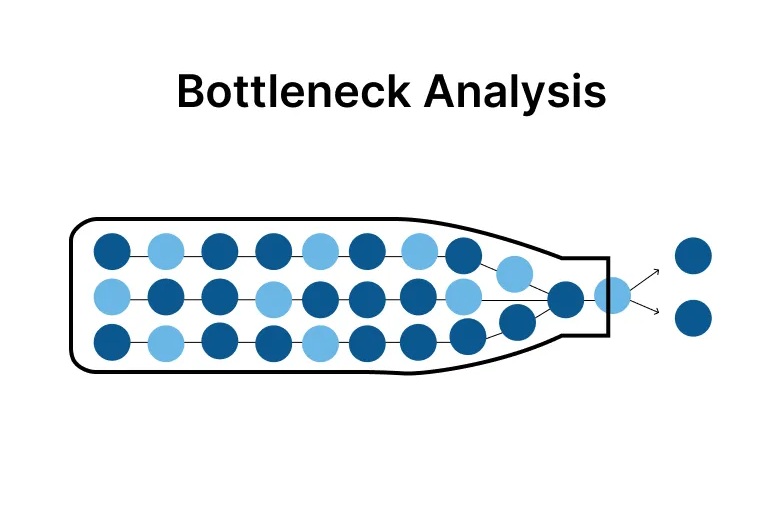The foundry and casting industry faces constant pressure to maintain product quality, process efficiency, and on-time delivery. Yet, many manufacturers still suffer from recurring delays, material waste, or inconsistent quality—often without a clear understanding of where the real problem lies.
This is where identifying bottlenecks becomes essential. Bottlenecks aren’t just about broken machines or slow processes—they’re any point in your production chain that limits overall throughput. In a foundry environment, these bottlenecks can be subtle and hidden across different stages: from lab testing delays and manual data entry to poor system communication between departments.
What Is a Bottleneck, and Why Does It Matter?
A bottleneck is any step in your process that operates significantly slower or less efficiently than the rest, limiting your total output. Identifying and addressing bottlenecks is critical for improving capacity, reducing waste, enhancing quality control, and meeting delivery deadlines.
In foundry operations, bottlenecks often emerge in:
-
Incoming materials: Material is used before CoA validation due to manual checks or missing records.
-
Melting process: Incorrect alloying due to unavailable or delayed lab data.
-
Quality Control (QC): OES or other lab results are delayed because of manual transcription.
-
Quality Assurance (QA): Documentation errors due to disconnected or outdated data.
-
Shipping: Delays in product release due to pending data approvals.
Step-by-Step Guide to Identifying Bottlenecks in Foundry Operations
1. Map Your End-to-End Process Flow
Start by mapping your full workflow—from material reception and alloy preparation, to melting, testing, QA, and shipping. Identify each activity, who is responsible, and what systems are involved.
2. Measure Process Times and Waiting Times
Use timestamps, SCADA logs, or manual timing to assess:
-
How long each step takes
-
Where queues or backlogs occur
-
How long lab data or approvals are pending
In many cases, waiting time exceeds processing time—a clear indicator of hidden bottlenecks.
3. Evaluate Data Handover Points
Analyze how data flows between stages:
-
Are CoA results entered manually into Excel?
-
Is OES data retyped into a separate system?
-
Are approvals done via email or WhatsApp?
Each manual handover introduces friction, delay, and risk of error.
4. Identify Rework and Variability
Track the frequency of:
-
Repeated tests due to invalid data
-
CoA revisions
-
Products held in QA due to incomplete or inconsistent records
Such rework not only delays processes but also hides systemic inefficiencies.
5. Use Integrated Systems for Real-Time Visibility
A modern integrated LIMS allows you to:
-
View real-time status of each batch’s lab results
-
Automatically capture data from instruments (OES, scales, furnaces)
-
Track approval stages and QA documentation
-
Synchronize data across warehouse, production, lab, and logistics teams
This visibility helps managers and supervisors immediately spot where delays or inconsistencies are occurring.
Case Example: A Hidden Lab Bottleneck
One of our clients experienced a recurring three-hour production delay every day. Upon closer investigation, the root cause was the manual transcription of OES data into Excel, followed by QA verification and ERP input. Each lot faced a 30 to 45-minute delay.
After implementing our integrated LIMS, which automatically retrieved and validated OES data and pushed it directly to ERP, that time was reduced to under five minutes. The result: no more furnace queue, and an increase in daily production capacity—without adding shifts.
Conclusion
Identifying bottlenecks is not about blaming equipment or staff—it’s about understanding data flow, decision latency, and process friction across the value chain.
With a data-driven approach and systems like LIMS that connect your lab to production, warehouse, and quality systems, foundry businesses can:
-
Gain real-time visibility across all departments
-
Eliminate manual tasks and reduce errors
-
Shorten lead times and accelerate shipping
-
Make confident, data-based decisions faster
Digital transformation doesn’t always mean new machines—often, it just means connecting the dots that were previously isolated.

